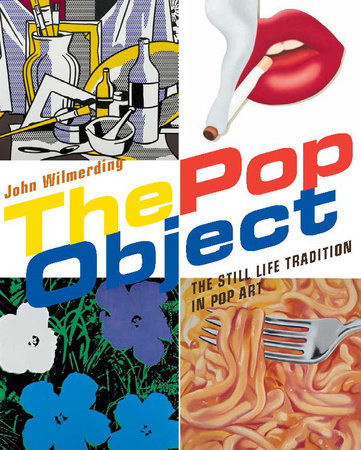
The Pop Object: The Still Life Tradition in Pop Art – John Wilmerding
This is a book produced by the curator for an eponymous exhibition at Acquavella Galleries. As such it is a big beautiful glossy refutation of the perception of still life painting as a skill building exercise or a safe way to explore new techniques. Of course there is text here, but the focus is really on the pictures, which makes it a relatively easy read compared to more theory based books.
The book starts by exploring an apparent art historical blindspot in the analysis of the Pop Art movement: the legacy of still life art and its influences on or in Pop art.
Chapter one covers the origins of the still life genre and documents the parting ways from its role on the edges of more serious subjects in art history. There is a brief discussion of some of the technical innovations, such as chiaroscuro and cubism, which were introduced in still life painting, as well as the hidden symbolism in Christian art’s still life elements. Parallels are mentioned between the prosperity of the Dutch golden age which produced so many realist still life paintings, and the prosperity of 20th century America where/when Pop Art was really ‘popularized’. The proposal is that still life conceptually comes into its own in American Pop art as a form of cultural statement by linking arms with the modern world’s focus on surface, object, commercialism and consumerism.
However, rather than illustrate the depth of significance in the pairing of Pop and still life art by taking an issues based approach to dividing the material, the book then groups and explores contributions by object type. Chapters include Food and Drink, Flowers, Housewares and Appliances, and finally Body Parts and Clothing. The table of contents reads like the aisle signs at a supermarket, so in a book about an art movement which both celebrates and critiques consumer culture, it is not the worst way to divide the contents. However it definitely establishes that the book is promoting Pop Art, not still life art.
Dividing the book categorically like this allows the author to pair images of works by Pop artists with their art history precedents, (Cezanne, Still Life With Apples and Oranges (c.1895) and Segal, Cezanne Still Life #4 (1981)) to demonstrate lineages, as well as exploring within the pop movement how the neutrality of consumer objects become a canvas on which any number of styles of representations may be made, yet still elude meaning within the representation of the particular object (Thiebaud, Four Ice cream Cones (1964), Lichtenstein, Ice Cream Cone (1963) & Oldenberg, Floor Cone (1962)).
For my own interests, I found the chapter on food, and the final chapter, Body Parts and Clothing, to be of the most interest. Pairing western consumer objectifications of the female form in Pop still life artworks with a critical perspective makes sense. So if I am struggling with some avenue of thought along those lines I will be definitely looking to refer back to this book. Otherwise, somewhat like popular culture, the book is a feast for they eyes and meant to be enjoyed for its surface pleasures, rather than complicated meanings.